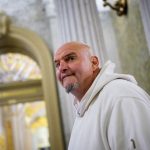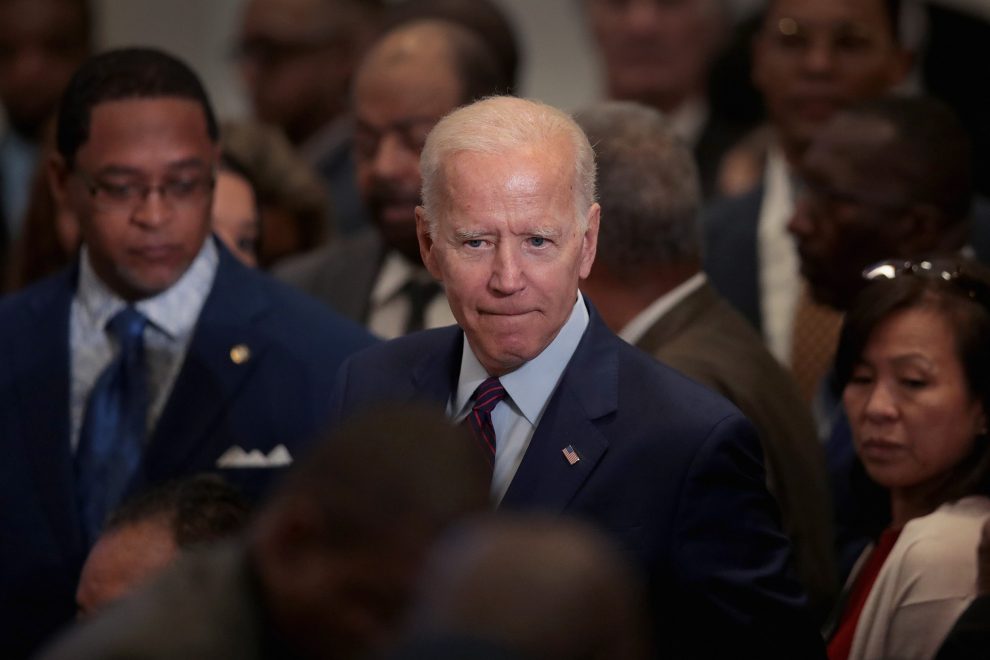President-elect Joe Biden unveiled a coronavirus plan Thursday that he claims will turn the tide on the pandemic, speeding up the vaccine rollout, and providing financial help to individuals, states, and local governments and businesses struggling with the prolonged economic fallout.
The proposal reflects the priorities of Democrats, spending more money on aiding state governments, schools, and colleges than stimulus payments to individuals. It also includes a minimum wage hike, a measure sought by Democrats long before the pandemic struck.
The proposal includes:
$350 billion in state and local government aid
$170 billion for K-12 schools and institutions of higher education
Direct payments of $1,400 to most Americans, costing around $320 billion according to a Breitbart News’ estimate
Enhanced unemployment benefits increasing payments by $400 per week through the end of September
$50 billion for Covid-19 testing
$20 billion toward a national vaccine program
Raising the Child Tax Credit to $3,000 per child and making it fully refundable for 2021
The non-spending proposals include:
Hiking the federal minimum wage to $15 per hour
Extending the eviction and foreclosure moratoriums until the end of September
Extended family leave
Called the “American Rescue Plan,” it would amount to $1.9 trillion in spending. Despite the massive cost, the plan does not focus on creating jobs or set aside money for building American infrastructure.
Those things will have to wait for a second bill that Biden says will be introduced in February, to also include measures, his advisers say, will combat climate change and advance racial equity.
The proposal falls short of expectations for $2,000 direct stimulus payments. Instead, it provides for what Breitbart News estimates would be around $320 billion in direct payments of $1,400 for most Americans. Biden’s aides say this amounts to the promised $2,000 when coupled with the $600 included in the aid bill President Donald Trump signed last year.
The proposal includes an even larger amount of funds for state and local governments, schools, and colleges. Biden’s plan provides for $350 billion in state and local government aid and another $170 billion for K-12 schools and colleges.
Under Biden’s multipronged strategy, only about $400 billion would go directly to combating the pandemic, while the rest is focused on economic relief and aid to states and localities.
Biden’s aides claimed, without evidence, that the proposal would advance his target of administering 100 million vaccines by the 100th day of his administration and help move toward the objective of reopening most schools by the spring.
In an odd decision when unemployment is extremely high among low-income Americans, the proposal shoehorns inthe long-term Democratic policy aim of hiking the minimum wage to $15 an hour. That is likely to make it harder for low-income Americans to find jobs, putting further strains on state budgets funding employment benefits.
The proposal also expands paid leave for workers and increases tax credits for families with children, goals shared by many pro-family conservatives seeking to make family formation more affordable.
The political outlook for the legislation remained unclear. In a joint statement, House Speaker Nancy Pelosi and Senate Democratic leader Chuck Schumer praised Biden for including liberal priorities, saying they would move quickly to pass it. But Democrats have narrow margins in both chambers of Congress, and Republicans will push back on issues that range from increasing the minimum wage to providing more money for states, while demanding inclusion of their priorities, such as liability protection for businesses.
“Remember that a bipartisan $900 billion #COVID19 relief bill became law just 18 days ago,” tweeted Sen. John Cornyn, R-Texas.
The emergency legislation would be paid for with borrowed money, adding to trillions in debt the government has already incurred to confront the pandemic. Aides said Biden will make the case that the additional spending and borrowing is necessary to prevent the economy from sliding into an even deeper hole. Interest rates are low, making debt more manageable. Inflation is below the Federal Reserve’s target, indicating that the economy has enough slack to withstand additional demand introduced by deficit spending.
Biden has long held that economic recovery is inextricably linked with controlling the coronavirus. “Our work begins with getting COVID under control,” he declared in his victory speech. “We cannot repair the economy, restore our vitality, or relish life’s most precious moments until we get it under control.”
Despite this claim, the economy in the final six months of the Trump administration has out-performed the expectations of most economists. Re-opening many businesses and adjustments to business operations, including encouraging employees to work from home and making workplaces more amenable to social distancing, have allowed many businesses to regain their footing.
The plan comes as a divided nation is in the grip of the pandemic’s most dangerous wave yet. So far, more than 385,000 people have died of COVID-19 in the U.S. And government numbers out Thursday reported a jump in weekly unemployment claims, to 965,000, a sign that rising infections are forcing businesses to cut back and lay off workers.
About $20 billion would be allocated for a more disciplined focus on vaccination, on top of some $8 billion already approved by Congress. Biden has called for setting up mass vaccination centers and sending mobile units to hard-to-reach areas.
The plan provides $50 billion to expand testing, which is seen as key to reopening most schools by the end of the new administration’s first 100 days. About $130 billion would be allocated to help schools reopen without risking further contagion.
The plan would fund the hiring of 100,000 public health workers to focus on encouraging people to get vaccinated and on tracing the contacts of those infected with the coronavirus.
There’s also a proposal to boost investment in genetic sequencing, and to help track new virus strains, including the more contagious variants identified in the United Kingdom and South Africa.
Throughout the plan, there’s a focus on ensuring that minority communities that have borne the brunt of the pandemic are not shortchanged on vaccines and treatments, aides said.
With the new proposals comes a call to redouble efforts on the basics.
Biden is asking Americans to override their sense of pandemic fatigue and recommit to wearing masks, practicing social distancing and avoiding indoor gatherings, particularly larger ones. He contends it’s still the surest way to slow the COVID-19 wave, with more than 4,400 deaths reported just on Tuesday.
Biden’s biggest challenge will be to “win the hearts and minds of the American people to follow his lead,” said Dr. Leana Wen, a public health expert and emergency physician.
With the backing of Congress and the expertise of private and government scientists, the Trump administration has delivered two highly effective vaccines. and more are on the way. Yet a month after the first shots were given, the nation’s vaccination campaign is off to a slow start, with about 10.3 million people getting the first of two shots, although more than 29 million doses have been delivered.
Biden believes the key to speeding that up lies not only in delivering more vaccine but also in working closely with states and local communities to get shots into the arms of more people. The Trump administration provided the vaccine to states and set guidelines for who should get priority for shots, but they largely left it up to state and local officials to organize their vaccination campaigns.
“This is going to entail coordination at all levels, as well as resources,” said Dr. Nadine Gracia, executive vice president of the nonpartisan Trust for America’s Health. “There is a commitment the (incoming) administration has articulated to address the needs of communities.”
Biden has set a goal of administering 100 million shots in his first 100 days. The pace of vaccination is approaching one million shots a day, but 1.8 million a day would be needed to reach widespread or “herd” immunity by the summer, according to a recent estimate by the American Hospital Association. Wen says the pace should be even higher — closer to three million a day.
It’s still unclear how the new administration will address the issue of vaccine hesitancy, the doubts and suspicions that keep many people from getting a shot. Polls show it’s particularly a problem among Black Americans. “It’s important to acknowledge the reasons why it exists and work to earn trust and build vaccine confidence in communities,” said Gracia.
Next Wednesday, when Biden is sworn in as president, marks the anniversary of the first confirmed case of COVID-19 in the United States.
Story cited here.
























